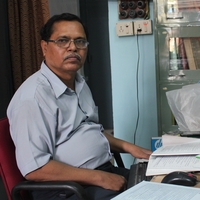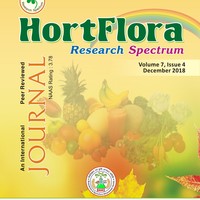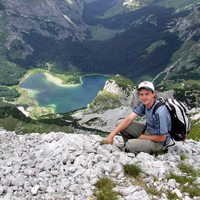Papers by E. Papastergiadou

Hydrobiologia, 2016
Abstract Mediterranean watercourses are among the most threatened ecosystems worldwide, being inc... more Abstract Mediterranean watercourses are among the most threatened ecosystems worldwide, being increasingly important to understand environmental drivers of biotic assemblages. Our aim was to provide a comprehensive picture of bryophyte communities in Mediterranean rivers and to determine the environmental factors that influence their distribution. We used floristic data collected for inter-calibration purposes under the European Water Framework Directive and River Habitat Survey, from 474 river reaches in six countries of the European Mediterranean basin. We analysed data through classification, ordination and environmental niche modelling techniques, and classified taxa according to biogeographic and aquatic habitat frameworks developed specifically for bryophytes. These analyses revealed four types of communities influenced by spatio-temporal precipitation patterns, altitude and water chemistry factors, most notably calcium and manganese. Community types are compositionally differentiated, although they share some core taxa and show an overall tendency to have several temperate and exclusively aquatic taxa despite the intermittent nature of water flow in highly seasonal Mediterranean rivers. The modelling approach can be improved at a more local scale when more bryological data and higher-resolution environmental information become available. Given future scenarios of climate change and human alteration of hydrological regimes, broader scales studies are needed to monitor shifts in bryophyte communities.

The Mediterranean Rivers Geographic Intercalibration Group developed a 3-step approach that allow... more The Mediterranean Rivers Geographic Intercalibration Group developed a 3-step approach that allowed the characterization of the best available condition of four Mediterranean common stream types, regarding organic contamination and nutrients, hydrological and morphological alterations and land use. For this purpose, a common database composed of 7 member states national reference sites sampled for invertebrates, diatoms and macrophytes was used, with an initial number of 929 sample records gathered in different seasons, but mainly in spring. After a first step, the analyses of reference sites, classified with no-impact for hydromorphological changes, revealed that medium- size streams (100-1000 km 2) with highly seasonal hydrological regime are the most affected by extensive agriculture in the catchment, while non-siliceous rivers (e.g., calcareous river bed) are the most affected by intensive agriculture. Small rivers (<100 km 2) are those with a higher % of semi-natural areas. ...
... In order to analyze the role of the main factors influencing macrophyte growth in middle-size... more ... In order to analyze the role of the main factors influencing macrophyte growth in middle-sized ... according to the river typology of Latvia and previous analysis of environmental factors, the stream ... status of a stream by macrophytes requires a certain minimum plant quantity (6 10 ...

NATURA 2000 is a European network of protected areas, and is the core of EU nature conservation p... more NATURA 2000 is a European network of protected areas, and is the core of EU nature conservation policy. This planned “ecological“ network of key sites is due to be fully in place by 2004. The EU has set minimum nature conservation standards through two wildlife Directives which apply across all Member states. The 1979 “Birds Directive” and the 1992 Directive on the Conservation of Habitats and Wild Fauna and Flora (“Habitats Directive”) seek to counter a dramatic loss of wild habitats, flora, and fauna in Europe. The emphasis of the “Habitats Directive” (92/43/EEC) is to protect habitats, both in their own right and as locations of threatened species. Member states must be designate Special Areas of Conservation (SACs) for all Annex I habitats and Annex II species. The resulting network of SACs, together with Special Protection Areas designated under the Birds Directive, will comprise the NATURA 2000 network. The Directive’s list of 410 plant species whose habitats are to be protected (on Annex II) fails to include many species which should have been there on scientific grounds but were excluded for political expediency. In Greece a total number of 296 sites were proposed to be included in this network. This list included all the protected areas of Greece such as National Parks, Biogenetic reserves, Ramsar wetlands, etc.

According to the Intergovernmental Panel on Climate Change report released in September 2014, unp... more According to the Intergovernmental Panel on Climate Change report released in September 2014, unprecedented changes in temperature and precipitation patterns have been recorded globally in recent decades and further change is predicted to occur in the near future, mainly as the result of human activity. In particular, projections show that the Mediterranean climate zone will be markedly affected with significant implications for lake water levels and salinity. This may be exacerbated by increased demands for irrigation water. Based on long-term data from seven lakes and reservoirs covering a geographical gradient of 52° of latitudes and a literature review, we discuss how changes in water level and salinity related to climate change and water abstraction affect the ecosystem structure, function, biodiversity and ecological state of lakes and reservoirs. We discuss mitigation measures to counteract the negative effects on ecological status that are likely to result from changes in cl...










Uploads
Papers by E. Papastergiadou